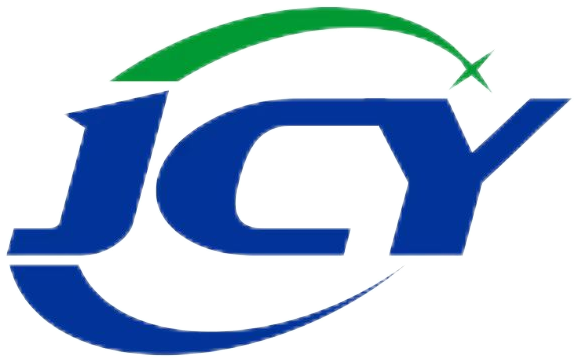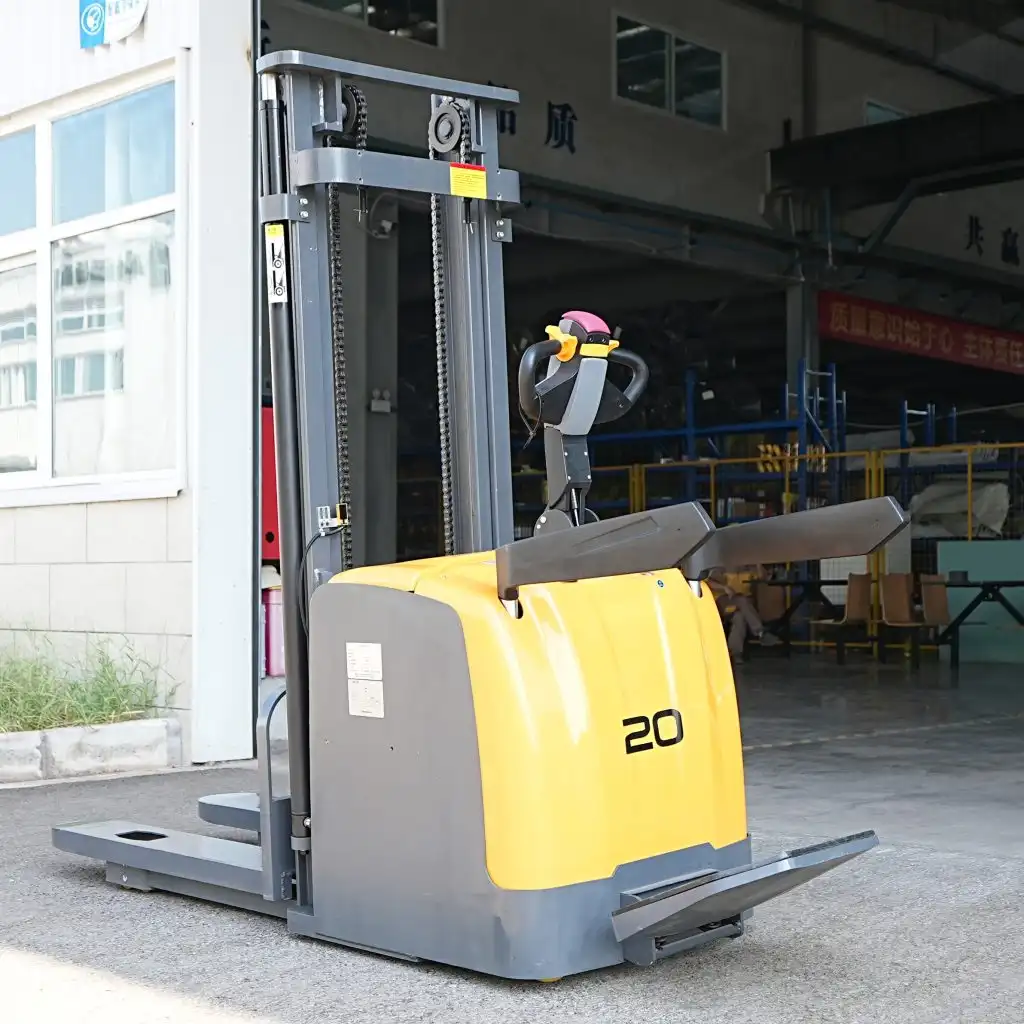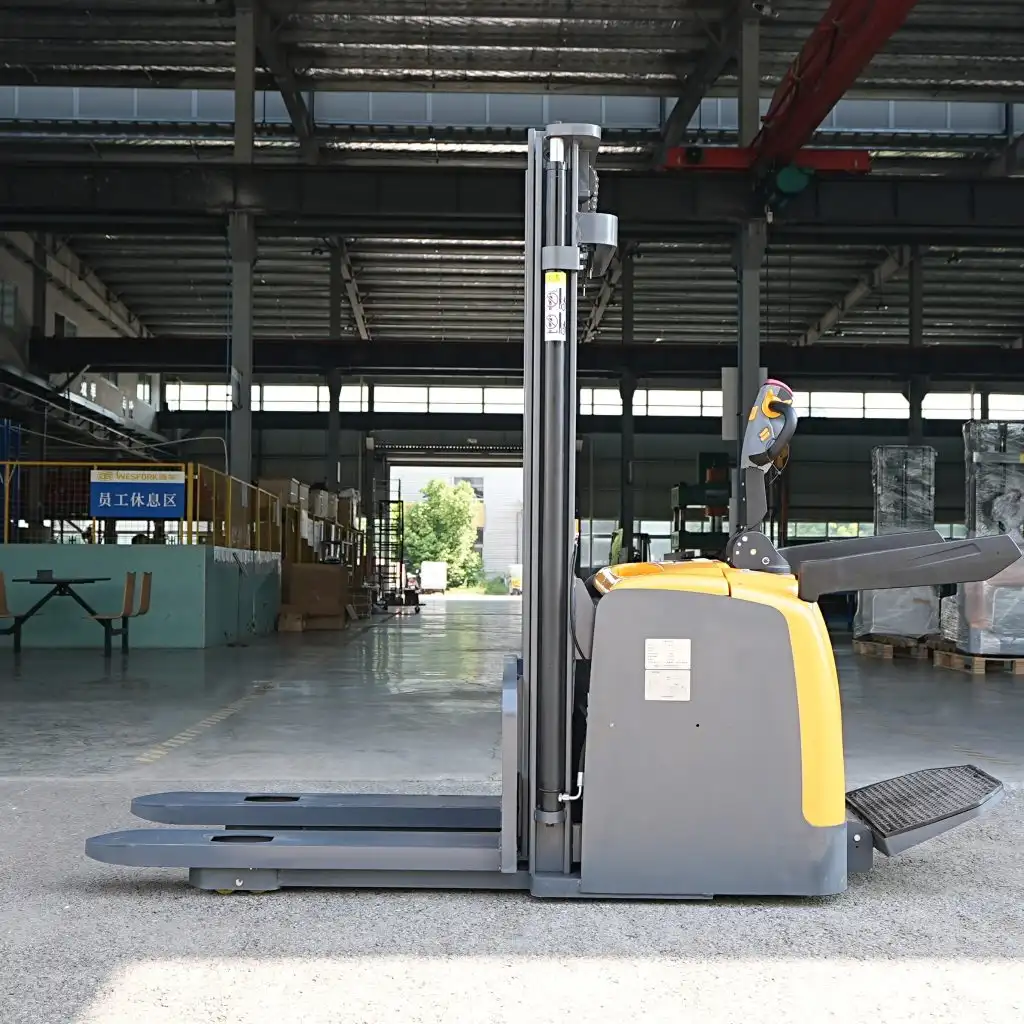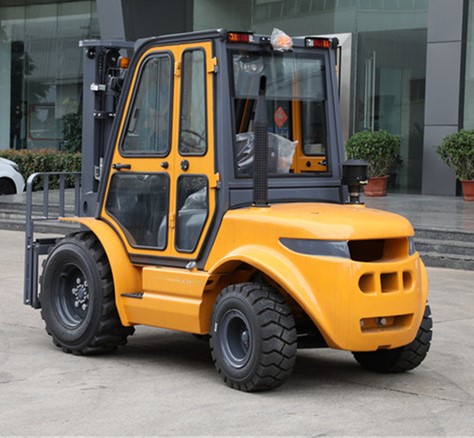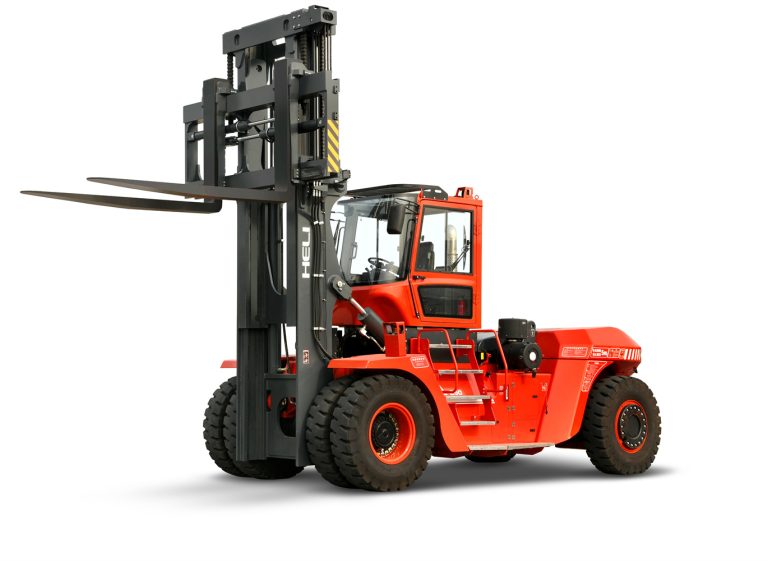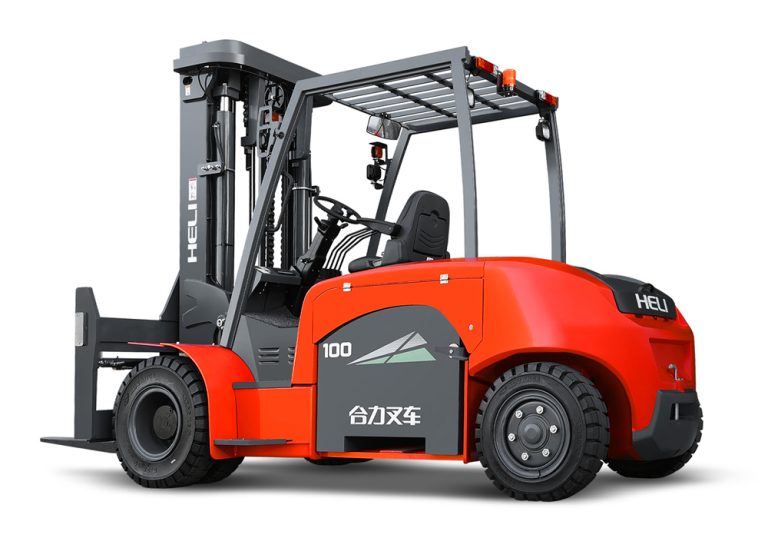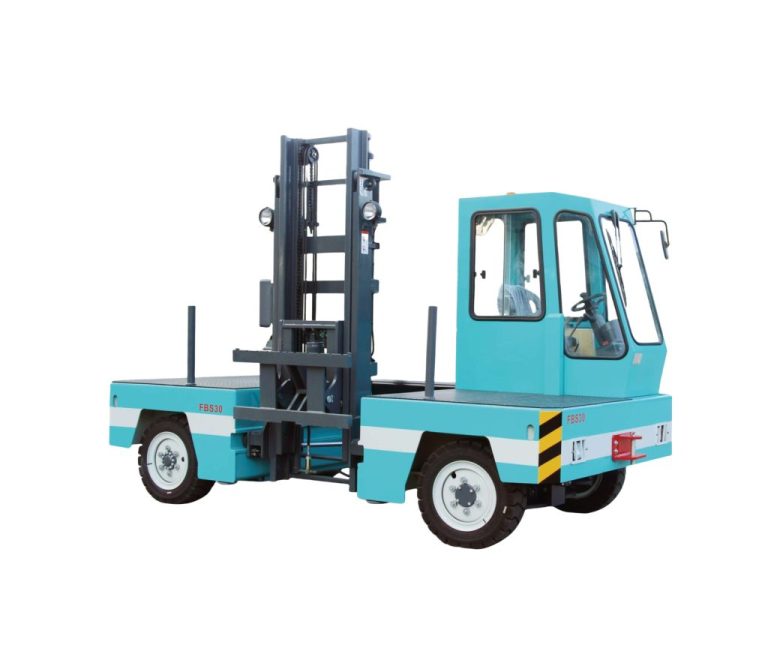What Are the Key Differences Between Heavy-Duty Standing-Type Stackers and Traditional Forklifts?
Stackers and forklifts start differently in their basic build. One is small and quick. The other is strong and can do many jobs. Knowing these differences helps match the machine to your work needs.
Design and Build
Heavy-duty standing-type stackers have a small body. They have a tall mast. The operator stands on a platform to drive the machine. Old-style forklifts are different. They usually have a seat for the driver. They are bigger and heavier. They have a large counterweight. This build difference makes stackers better for tight spaces. They work well with tall, close-together shelves.
Power Source and Saving Energy
Most new standing-type stackers run on electric batteries. This saves power. It makes less pollution inside buildings. Traditional forklifts often use engines. These burn diesel or LPG gas. Engines give strong pulling power. But they use more fuel. They also make more smoke. Electric stackers have another plus. They use systems that save battery power when slowing down. This helps the battery last longer.
Operator Position and Comfort
Standing-type stackers let the operator stand up. The controls are easy to reach. This setup reduces body strain. It avoids problems from sitting too long or twisting. Forklifts need sitting for many hours. This can make drivers tired during long work days. The stacker’s thoughtful design gives more comfort. This is good for jobs with many stops and starts.
Moving in Tight Spots
Standing-type stackers turn easily. They are small. This helps them move well in narrow aisles. Old-style forklifts often can’t do this as well. Their ability to handle tight corners is perfect. They suit small warehouses or work on upper floors.
JinChengYu FORKLIFT makes strong standing-type stackers. They are small but tough. They run smoothly even in little space.
Which Option Saves More Money Over Time?
Look beyond the first cost. The total cost of owning the machine (TCO) shows hidden savings. Think about energy use, repairs, and time the machine is broken. Electric stackers often give better payback inside buildings.
First Cost and Repair Bills
Old-style forklifts usually cost more to buy first. This is because they are bigger. Their engines are also more complex. Electric standing-type stackers often cost less to buy. They have fewer parts that need fixing. This means fewer repair visits. Costs over many years are lower.
Energy Use and Running Costs
Electric stackers use much less power than fuel-burning forklifts. Charging a battery is cheaper than buying diesel or LPG. Also, electric motors have fewer parts inside. This means they break down less often.
Broken Time and Machine Life
Stackers usually spend less time broken. Their electric systems are simple. This makes problems easy to find and fix. Forklifts with engines take longer to fix. Engine repairs or part changes cause long waits.
JinChengYu FORKLIFT sells tough standing-type stackers. They need fewer repairs. They work well for a long time.
How Do They Perform in Different Places?
Check how much they can lift. See where they work best. Each machine is good at certain jobs. Modern stackers now lift heavy loads up high like forklifts. But they are much better in narrow aisles.
Lift Power and Height
Old-style forklifts often lift heavier loads. This is true outside or on rough ground. But heavy-duty standing-type stackers are much closer now. Their lifting parts are better. They can handle big weights at high places.
Inside or Outside Use?
Standing-type stackers work best inside. They need flat floors like in warehouses. Forklifts are more flexible outside. They have air-filled tires. They sit higher off the ground.
Toughness for Long Work
Forklifts are built for hard conditions. But top-quality stackers are also tough now. They have strong masts. They have steel bodies. They use heavy-duty parts. This keeps them working hard for a long time.
JinChengYu FORKLIFT’s heavy-duty models are made for indoor jobs. They lift heavy loads reliably. They stay strong while doing it.
How Are Their Safety Features Different?
Safety is more than just rules. It’s about smart building. Stackers have clever systems. These cut risks in small spaces. Forklifts depend more on the driver’s skill.
Built-in Safety: Stackers vs. Forklifts
New standing-type stackers have modern safety parts. These include slowing down automatically when turning. They stop lifting if the load is too heavy. They have easy-to-reach emergency stop buttons. They won’t roll back on slopes. Forklifts also have safety parts. These include seat belts and overhead guards. But they need more driver training. This is because they have bigger blind spots.
Seeing Well, Staying Stable, Driver Controls
Standing gives a better view forward than sitting. In forklifts, the mast can block sight. Stackers also have easy control panels. Drivers can react fast.
JinChengYu FORKLIFT makes sure its stackers meet strict safety rules. They add smart control systems. These help the machine stay steady. They also help the driver see better.
How Does New Technology Help Choose Equipment?
Modern links like WMS connections are important. Features ready for automation make stackers ready for the future. Old forklifts often can’t do this without costly changes.
Link to Warehouse Management Systems (WMS)
Advanced stackers can connect to WMS. This allows live stock tracking. It helps plan the best work order and path. Older forklifts usually can’t do this. They need expensive add-ons.
Smart Controls, Sensors, Automation
Many new stackers have smart controllers (PLCs). They have sensors to avoid bumps. They tell you automatically if something is wrong. You can check them from far away. These features fit the goals of modern industry.
JinChengYu FORKLIFT lets you customize. Options include smart sensors. They can link to your WMS. This meets specific work needs.
When Should You Switch to a Heavy-Duty Standing-Type Stacker?
Tight space, worker comfort rules, or needing more work done are signs. Stackers turn slow work into fast, exact work.
Changes in Warehouse Layout or Tight Space
Did your building change? Do you have narrower aisles now? Did you add tall shelves? Then you likely need a stacker. It is small but powerful. It makes the best use of your space.
Need to Handle More or Heavier Loads
Is your business growing? Do you move more goods? Are your items heavier now? Old hand trucks might not work anymore. You need to upgrade. Choose a strong electric machine.
Meeting Safety Rules or Improving Worker Comfort
Modern rules care about worker comfort and machine safety. Moving from old forklifts to new stackers is a smart step. It helps follow these rules.
JinChengYu FORKLIFT helps businesses change how they work. They offer special upgrades. These focus on doing more work safely.
Who Is JinChengYu FORKLIFT and Why Trust Them?
JinChengYu FORKLIFT mixes strong engineering with custom choices. Their stackers set new standards for lasting power. They back this with CE quality marks. They offer worldwide help after you buy.
JinChengYu FORKLIFT’s Machines
JinChengYu FORKLIFT makes machines for moving goods. These include heavy-duty electric pallet trucks. They make electric reach trucks and order pickers. They make tow tractors. Most importantly, they make heavy-duty standing-type electric stackers.
Focus on Heavy-Duty Standing-Type Stackers
Their main products are:
- Electric pallet trucks(2T-3T)
- Electric reach trucks (1T-2T)
- Order pickers (200kg)
- Tow tractors (2T-6T)
- Heavy-duty counterbalance forklifts (2T-3T)
- Semi-electric pallet trucks/stackers (1T-2T)
- And others.
Promise of Quality, Lasting Power, and Support
All their products have the CE mark. This means they meet world quality rules. JinChengYu focuses on machines you can count on. They give great help after you buy. This includes easy-to-get spare parts. They offer technical help too.
Custom Choices for Different Needs
They make special solutions for customers. They can change machine sizes. They can add special parts. These include smart sensors. They can make machines work with your WMS.
Summary: Key Points for Choosing Stackers
Deciding to switch from forklifts to stackers? Think about:
- How much space do you have?
- Compare costs over the machine’s whole life.
- Think about comfort for the operator.
- Can the machine connect to your other systems?
- How much work do you need to do?
- How safe is the machine?
- Pick a good supplier like JinChengYu FORKLIFT. They make excellent products. They can customize. They fit changing warehouse needs.
FAQs About Upgrading from Traditional Forklifts to Heavy-Duty Stackers
What space is needed for a standing-type stacker?
Stackers need narrow aisles. Often just 2–2.5 meters wide. This makes them perfect for packed storage buildings. Space saving is important there.
Can a heavy-duty stacker work outside?
They are mainly for inside on smooth floors. Some strong models can go outside briefly on flat ground. But forklifts are still better for long outdoor jobs.
Is switching to a stacker worth it if my forklift still works?
Yes, it can be. Especially if your work needs changed. Do you have tighter spaces now? Do you need to work faster? Modern electric stackers cost less to fix. They move better. This often makes the switch worthwhile. You don’t need to wait for your old machine to wear out first.
